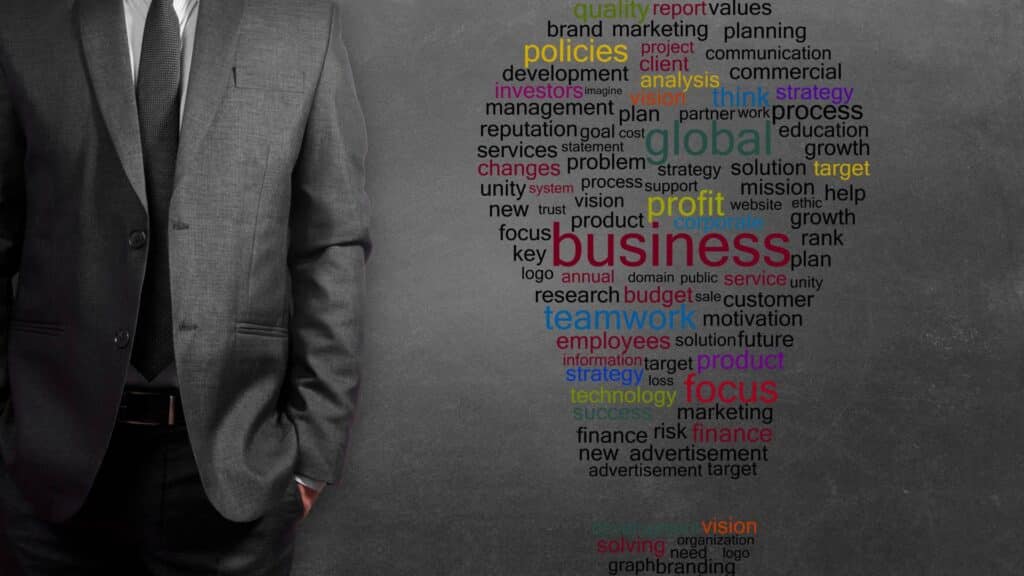A previous blog discussed the RevOps mindset and the three-legged stool of RevOps empowerment based on delivery, trust, and truth. With this understanding of purpose combined with knowledge, expertise, and swift execution, many RevOps professionals have succeeded and delivered immense value for their GTM organizations. However, the business world has changed dramatically in the last several years, and a new reality is now upon us. The speed and rate of change, combined with the latest technologies, have increased dramatically.
Why Now? How RevOps Solves Post-pandemic Revenue Challenges
What RevOps could respond to previously in a matter of days or even weeks now expects a response in hours, minutes, or even real-time. The critical needs of the business are both urgent and complex, requiring RevOps to be up on the bridge and ready to respond in a crisis. How do you structure this role and function in this new world to set you and your GTM organization up for success?
Why RevOps Needs a Strategic Seat at the Table
To illustrate this vision of a new way to structure the RevOps to address the world of today, let’s take a voyage to the final frontier—to seek out new life and new civilizations and boldly go where no man has gone before. Let’s take a look using a science fiction vision of the future: Star Trek.
Like the Starship Enterprise, companies today are moving at seemingly warp speed as they embark on a mission to achieve their strategic and corporate objectives in uncharted territories. For instance, 68 percent of companies lack a plan for every GTM launch. Yet, companies that took the time to define their launch process—just defining it—experienced a 10 percent increase in GTM success rates.
As you will see, the similarity is less strained than you may think, particularly regarding the ship’s structure and crew and how they operate effectively in the face of obstacles, the unknown, and continuous optimization while learning while on the go.
Understanding the Enterprise Framework
The Enterprise is powered by the ship’s engine, which supports all life on the ship and propels it via warp drive technology. By comparison, revenue fuels the GTM engine in today’s companies. It’s backed by the tech stack, which converts revenue into power and operational support for the company and its crew.
The ship’s speed and the life-supporting services it maintains for the crew—including shields, weapons, etc.—are delivered by the engine using a full range of power from lower impulse power to high, white-knuckling warp speeds.
As for the crew, many crew members play an integral role in the ship’s functionality, but for the purposes of this analogy, let’s focus on three primary characters: the captain, the chief engineer, and the computer.
- The ship’s captain (Captain Kirk) is the chief revenue officer. This may be your organization’s CEO or CFO, but this role commands the ship.
- The chief engineer (Scotty) is the revenue operations (RevOps) leader, a senior member of the leadership team, with primary responsibilities for the ship’s engine and warp core.
- The ship’s computer is AI. It takes orders from the crew and can be directed to control everything on the ship, including the ability to travel at warp speed.
The similarities of the challenges and pressures associated with charting a powerful starship and driving toward revenue and strategic goals are worth noting. For instance, like Captain Kirk, the CRO/CEO sits at the company’s helm, charting the course and keeping everyone on the ship safe and on track in support of the mission. Like the chief engineer, the RevOps leader keeps the GTM engine working smoothly to deliver all the services needed for the ship and its crew. The Enterprise is dead in the water without the ship’s engines propelling it through space, just like a company cannot function without revenue and the successful operation of the GTM engine. The ship’s (your company’s) propulsion is delivered via a GTM engine powered by a set of complex systems and processes where people can take the guesswork out of their GTM journey through configuration, optimization, and maintenance.
An advanced technology stack allows companies to automate many processes and functions. However, that also requires an increasingly sophisticated RevOps function that manages, maintains, and improves this tech stack in an ever-increasing partnership with AI.
AI Engaged
When I was growing up, I read a lot of science fiction. I was fascinated by technology. Isaac Asimov’s I Robot was one of my favorites, with its brilliant Three Laws of Robotics and the challenges of navigating a world with advanced technology (intelligent robots) and humans working and living together. I loved thinking about the implications of technology on people’s lives. How will it change and transform the way we work as new and exciting technologies are invented daily? How will we make it all work together? Then, I would imagine intelligent robots and machines we could communicate with directly to achieve greater and more significant improvements in the world around us.
Here we are today with AI showing up everywhere, including RevOps!
Although it may seem daunting to learn a new way of working, AI provides an opportunity to transform the way we work and engage with others. Eighty-eight percent of marketers rely on AI. A recent RevOps report found that 82 percent of revenue professionals see the long-term benefits of AI, but only half have deployed it for more than one use.
I would argue that AI is coming at just the right time to assist when we need it most, given the rate and speed of change that is happening around us. However, how do leaders in GTM organizations engage with AI to ensure that this technology works to our advantage? Will it slow us down, complicate our lives, or take over without us realizing it?
The Modern Challenge: A New Structure for Today
What your CRO and GTM leadership teams want today is what Captain Kirk utilizes on the bridge of the Enterprise—a command and control center with strategic maneuverability and access to warp speed. The true challenge is speed, which requires a whole new structure for the ship and crew. It requires a fully automated, functioning, and well-maintained engine tied into the rest of the ship’s systems that can be controlled and adjusted from not just the engine room but the bridge as well. This dual command and control functionality is new and well expressed in the Star Trek example, especially when under fire or when advanced navigation is needed.
It is important to realize that a new structure is required to achieve this capability, and it is not something that comes out of the box in a GTM organization. It must be created and will vary from organization to organization depending on the unique capabilities required to support the company’s mission.
The Star Trek metaphor offers a structural construct that includes the critical elements of any organization: captain, ship, engine, AI, and chief engineer (RevOps). These elements will vary depending on the organization’s size and scope, and creating a new and optimized structure is yet another challenge. It is also where revenue operations play a central role.
Imagine yourself as the chief engineer, stepping onto the bridge of the Enterprise in the middle of a challenging mission or Klingon firefight. The captain is calling for the ship’s capabilities, such as warp speed or shields, at a level not currently available due to a system failure or technology capability not available or in place. Your role is to create that capability, whether by repairing or retrofitting the capability or by building it while the ship is flying and navigating through space. You are the miracle worker; that is the job.
The Power of Joined Forces
In this environment, the relationship, trust, and communication between the GTM leadership team and RevOps are key. It’s just like the relationship between Captain Kirk and Scotty when the engines are offline, and Captain Kirk calls down to engineering to ask when they will have warp speed or power to the shields: The communication in that moment is pivotal, as decisions made in the heat of battle can turn the fight one way or another.
Sometimes, the response is, “Just give me a few more minutes, Captain.” Other times, the response is, “Not possible. We will need to find another way.” In either case, the critical role of RevOps is to step into that leadership role of chief engineer and respond with the truth.
One of the best examples of this crisis engagement in RevOps is end-of-quarter swing deals with the deal desk that can make or break the quarter (either >100 percent or <100 percent.) Negotiations are down to the wire on terms, with approvals and signatures needed by midnight to book the deal and recognize the revenue.
It’s all hands on deck, including executive sponsors and a full array of GTM teams engaged to bring it over the line. Then, there is a last-minute issue. The call comes into RevOps: How do we get this deal done? Can we get it done? And the quarter hangs in the balance.
I have been in many situations like this. Fortunately, I’ve had great RevOps team members who knew the systems, processes, and policies by heart and mastered the creative (and legitimate) ways to make the deal happen or clarify why it was “just not possible.” This leadership requires having an equal position on the GTM leadership team so that you can engage directly and openly. The challenge was always how this was communicated and whether there was trust and a relationship between the GTM leadership and CRO. (I will talk more about this in Chapter 5.)
The Intergalactic Opportunity of AI
The real challenge for RevOps today is not only in those crisis situations where time and speed are of the essence but also where there is limited RevOps capacity to deliver on the asks of the business. Balancing the demands of maintaining operations and providing core services to GTM teams often leaves little focus or energy for delivering critical business insights, which poses a significant risk. Too frequently, the asks of RevOps for “what if” scenario planning and strategy insights can’t be met with sufficient or timely responses due to limited bandwidth.
The challenge in addressing the growing number of requests for strategic insights lies in the need for expert business knowledge, a deep understanding of GTM strategy, and advanced analytical skills. These requests are typically handled by the top talents on your RevOps team, who are a valuable yet limited resource. Scaling them is more complicated, as onboarding new team members can take months or even years.
Here is where the third character in our Star Trek analogy comes into play—the ship’s computer. Always ubiquitous in the background, the computer of the Enterprise is available for requests for information and analysis at any time of day. It can be tasked to run scenarios and assess probabilities, and it has an unlimited capacity to search through the ship’s database to deliver information instantaneously. In addition, the computer can be given authorized commands to control parts of the ship and monitor systems, but it is not able to reason or make decisions on behalf of the crew or captain. The computer enables the ship to be managed and supported by a smaller, more expert crew.
In many ways, that is where artificial intelligence (AI) is today and reflects how we can use it to our immediate benefit. Around 72 percent of organizations have started using AI for at least one business function.
Given today’s capabilities, what is the approach for RevOps with AI in 2024? With any newer technology, there are risks, concerns, and fears, but there is also an opportunity to work with AI to respond to today’s urgent demands.
The AI Journey Introduces New Capabilities
While AI provides the new data-driven capabilities that unify tech stack functionality and provide better visibility, RevOps leaders can use this insight to be a trusted advisor and keep RevOps on track. Star Trek provides a glimpse into that potential future and emphasizes that armed with powerful AI-backed tools, leadership, insights, and critical decision-making are essential for a successful voyage.
Better Visibility
Your crew wants complete visibility and access to all of the key levers with the ability to adjust and maneuver when needed, often in a crisis. This ask is no longer a nice-to-have but a critical need as the rate of change in business is increasing every day, and the ability to respond quickly is often the difference between success and failure.
Integrated Tech Stack
A perfectly functioning and integrated GTM tech stack is a simple ask, where the data is clean, and processes are fully optimized. Like the Enterprise bridge, you can provide a command and control dashboard with a few RevOps crew members to respond to demands and make minor course calculations.
Real-Time Bridge Controls
The key business metrics and success indicators alert teams with real-time indicators to show what needs attention and what is on track. With this innovation, RevOps could hang out down in the engine room and fine-tune the GTM engine without needing to go to the bridge to meet with the CRO.
Unfortunately, we are not living in that world today. Nevertheless, we are still traveling at the speed of light and face as many challenges as we do. For instance, the company still needs to
- deliver on the revenue goals for this quarter and forecast, plan, and optimize for the next quarter and beyond; and
- change course with its strategy to adjust to changing market conditions and competitors.
The key is data. With AI, requests that were once too time-consuming for a quick response in a GTM organization are achieved with the touch of a button. It could be something as simple as the following:
- “Provide forecasting capability for a new product/service or an existing product/service via a new route to market.”
- “What would that look like? Show me a scenario so that I can see if that is something we want to conduct a strategic assessment on.”
- “I need the rest of the products/services in the organization to keep forecasting, but now with advanced future state predictive analytics multiple quarters ahead.”
Not only that, but RevOps also has to deliver a broad range of services, many of which are on tech platforms that are not integrated, with data challenges and misaligned processes. There are new technologies to install and integrate, and legacy systems need to be modernized. RevOps teams are often overwhelmed with requests to support the business, many urgent and critical. And these are all on the “normal” days when there are no fires to put out and no Klingon attacks to defend the starship!
RevOps as a Teacher
Many GTM teams are now using AI to help them be more effective in their roles, including RevOps. Using AI can free up crucial bandwidth exhausted by precious resources on repetitive tasks and noncritical workloads. AI can run what-if scenarios against large and complex data sets, allowing more time to prepare for critical decision-making engagements or handle higher-order tasks and initiatives.
However, today’s AI has yet to become the computer of the future in Star Trek. It must be trained and developed, monitored and assessed—all with the knowledge that the responsibility for critical errors and hallucinations will fall to the operator, not AI. This takes knowledge, experience, and time.
When engaging with AI, I suggest a similar approach to onboarding and training new hires or less-experienced resources. It is critical to invest the time upfront to teach your LLM and work to assess capabilities, then delegate monitoring for tasks. The more time you invest, the more you will ultimately be able to delegate to exponential effect.
As with any technology, there is a concern that AI will replace people or the work they do. It is more likely that the people and leaders who use and embrace AI will take the jobs of those who do not because they will be more effective in their roles. AI can give leaders an advantage in crises by freeing time to be better prepared when they face a challenge.
Some RevOps professionals want to remain in the engine room, heads down, busy working on the tasks at hand. However, AI allows them to free up some of their time. What they do with it will be the true test. The most pressing need that AI cannot directly address is for RevOps leaders to step up to the bridge and engage directly with the leadership team.
In our next installment in the series, we will explore Command and Control with the ship’s Captain as we Engage on this new journey together!























